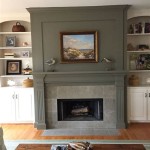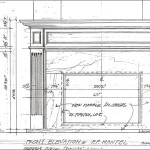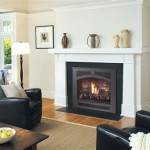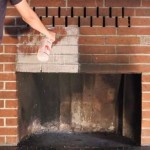Gas Fireplace Conversion: A Comprehensive Guide
Gas fireplaces offer a convenient and efficient alternative to traditional wood-burning fireplaces. However, evolving heating needs, aesthetic preferences, or concerns about efficiency might prompt a desire to convert an existing gas fireplace to a different type or fuel source. This article provides a comprehensive overview of gas fireplace conversion, outlining the necessary steps, considerations, and potential challenges involved in the process.
Converting a gas fireplace is not a simple do-it-yourself project. It often requires specialized knowledge, tools, and adherence to local building codes and safety regulations. Improper conversion can lead to dangerous gas leaks, fire hazards, or carbon monoxide poisoning. Therefore, it is strongly recommended that homeowners consult with and hire qualified professionals, such as licensed gas fitters or HVAC technicians, to perform the conversion.
Understanding the Types of Gas Fireplace Conversions
Several types of gas fireplace conversions are possible, each with varying degrees of complexity and cost. The most common conversions include:
*Natural Gas to Propane Conversion:
This involves adapting a natural gas fireplace to run on propane. Natural gas and propane have different energy densities and require different gas pressure and burner orifice sizes. Converting to propane usually involves replacing the existing natural gas regulator, burner orifice, and sometimes other components to ensure proper combustion and gas flow. The conversion kit should be specifically designed for the fireplace model and approved by the manufacturer. *Propane to Natural Gas Conversion:
This is the reverse of the previous conversion, adapting a propane fireplace to burn natural gas. Similar to the natural gas to propane conversion, this requires adjustments to the gas regulator, burner orifice, and potentially other parts to accommodate the different properties of natural gas. Again, using a manufacturer-approved conversion kit is crucial. *Gas Log Set Conversion:
This involves replacing existing gas logs with a different style or material. Gas logs can be vented or ventless. Vented gas logs require an open chimney for proper ventilation, while ventless gas logs burn more efficiently but produce small amounts of carbon monoxide and water vapor and need to be installed in a properly sized room with adequate ventilation. When changing gas log sets, it’s important to ensure compatibility with the existing burner system and gas supply line. *Fireplace Insert Conversion:
This involves installing a self-contained gas fireplace insert into an existing fireplace opening. Inserts are typically more efficient and offer better heating performance than traditional gas logs. The conversion involves disconnecting the existing gas supply line, preparing the fireplace opening, installing the insert, and connecting it to the gas line. Careful measurements are crucial to ensure the insert fits properly and meets safety clearances. *Decorative Media Conversion:
This type of conversion focuses on changing the appearance of the fireplace without altering the fundamental operation or gas supply. It involves replacing the existing gas logs or rocks with decorative media such as glass beads, river stones, or ceramic shapes. This type of conversion is generally simpler but requires careful consideration to ensure the new media is compatible with the burner system and does not obstruct gas flow or create unsafe conditions.Key Steps in the Gas Fireplace Conversion Process
The process of converting a gas fireplace typically involves the following steps:
1.Assessment and Planning:
The first step is to assess the existing fireplace and determine the feasibility and scope of the conversion. This involves evaluating the existing gas line size and pressure, checking the fireplace dimensions and ventilation, and identifying any potential obstructions or safety concerns. A qualified technician can help determine the appropriate conversion method and identify the necessary parts and materials. 2.Permitting and Compliance:
Building codes and regulations often govern gas fireplace conversions. It is crucial to obtain the necessary permits from the local building department before starting the conversion. This ensures that the conversion meets all safety and compliance requirements. Permits usually require inspections at various stages of the process. 3.Gas Line Shut-Off and Preparation:
Before starting any physical work, the gas supply to the fireplace must be completely shut off. This is typically done at the main gas meter or a shut-off valve located near the fireplace. It's crucial to confirm the gas is completely off using a gas detector before proceeding. The existing gas line needs to be disconnected from the fireplace, and the work area should be cleared of any flammable materials. 4.Removal of Existing Components:
The existing gas logs, burner assembly, and other components must be carefully removed. These components should be disposed of properly, following local regulations. It's important to document the arrangement and connections of the existing components before removal for future reference or possible reinstallation. 5.Installation of New Components:
The new gas regulator, burner orifice, gas logs or insert, and other components are installed according to the manufacturer's instructions. It is crucial to use the correct tools and techniques to ensure proper installation and prevent leaks or damage. All connections must be tightened securely, and all safety features should be properly installed and tested. 6.Gas Leak Testing:
After installing the new components, a gas leak test must be performed to ensure there are no leaks in the gas line or connections. A gas leak detector or a soap solution can be used to check for leaks. Any leaks must be repaired immediately before proceeding. 7.Ignition and Flame Testing:
Once the gas leak test is successful, the fireplace can be ignited, and the flame should be tested for proper size, color, and stability. The flame should burn evenly and consistently and should not be too high or low. Adjustments to the gas regulator or burner controls may be necessary to achieve the optimal flame. 8.Carbon Monoxide Testing:
Even with proper installation, a carbon monoxide test should be performed to ensure that the fireplace is not producing dangerous levels of carbon monoxide. A carbon monoxide detector should be used to monitor the levels near the fireplace and in the surrounding room. If elevated carbon monoxide levels are detected, the fireplace should be shut off immediately and a qualified technician should be called to investigate the problem. 9.Final Inspection and Certification:
After the conversion is complete and all tests are successful, a final inspection should be performed by the local building department to ensure that the conversion meets all applicable codes and regulations. Once the inspection is passed, the conversion is certified, and the fireplace can be used safely.Important Considerations and Potential Challenges
Several factors can influence the complexity and success of a gas fireplace conversion:
*Compatibility:
Ensuring compatibility between the existing fireplace, the new components, and the gas supply is critical. Using manufacturer-approved conversion kits and consulting with qualified technicians can help avoid compatibility issues. *Gas Line Size and Pressure:
The gas line must be adequately sized to supply the required gas flow to the new burner. Insufficient gas pressure can lead to poor flame performance or incomplete combustion. A licensed gas fitter can assess the gas line and make any necessary modifications. *Ventilation:
Proper ventilation is essential for safe and efficient operation of a gas fireplace. Vented gas fireplaces require an open chimney, while ventless gas fireplaces require adequate room ventilation. Improper ventilation can lead to carbon monoxide buildup and other safety hazards. *Building Codes and Regulations:
Gas fireplace conversions are subject to local building codes and regulations, which vary depending on the location. It is important to obtain the necessary permits and comply with all applicable codes. *Cost:
The cost of a gas fireplace conversion can vary depending on the type of conversion, the complexity of the installation, and the cost of the new components. It is important to obtain estimates from multiple contractors before starting the conversion. *Safety:
Safety should be the top priority during a gas fireplace conversion. Improper installation or lack of proper ventilation can lead to dangerous gas leaks, fire hazards, or carbon monoxide poisoning. It is strongly recommended that homeowners hire qualified professionals to perform the conversion.Can I Convert My Wood Burning Fireplace To Gas Woodlanddirect Com
Converting A Wood Burning Fireplace Into Gas Heat Glo

Convert From Wood To Gas With A Insert The Kernel Burner

Want To Convert Gas Wood Fireplace Full Service Chimney

Wood To Gas Fireplace Conversion In Wisconsin Free Quote Badgerland Waesha

Wood Fireplaces Gas Conversion That Counts
Can I Convert My Wood Burning Fireplace To Gas Woodlanddirect Com

Convert A Wood Fireplace To Gas Full Service Chimney

Can A Wood Burning Fireplace Be Converted To Gas The Flame Company

Fireplace Insert Guide Fireplaces Direct Learning Center
Related Posts








